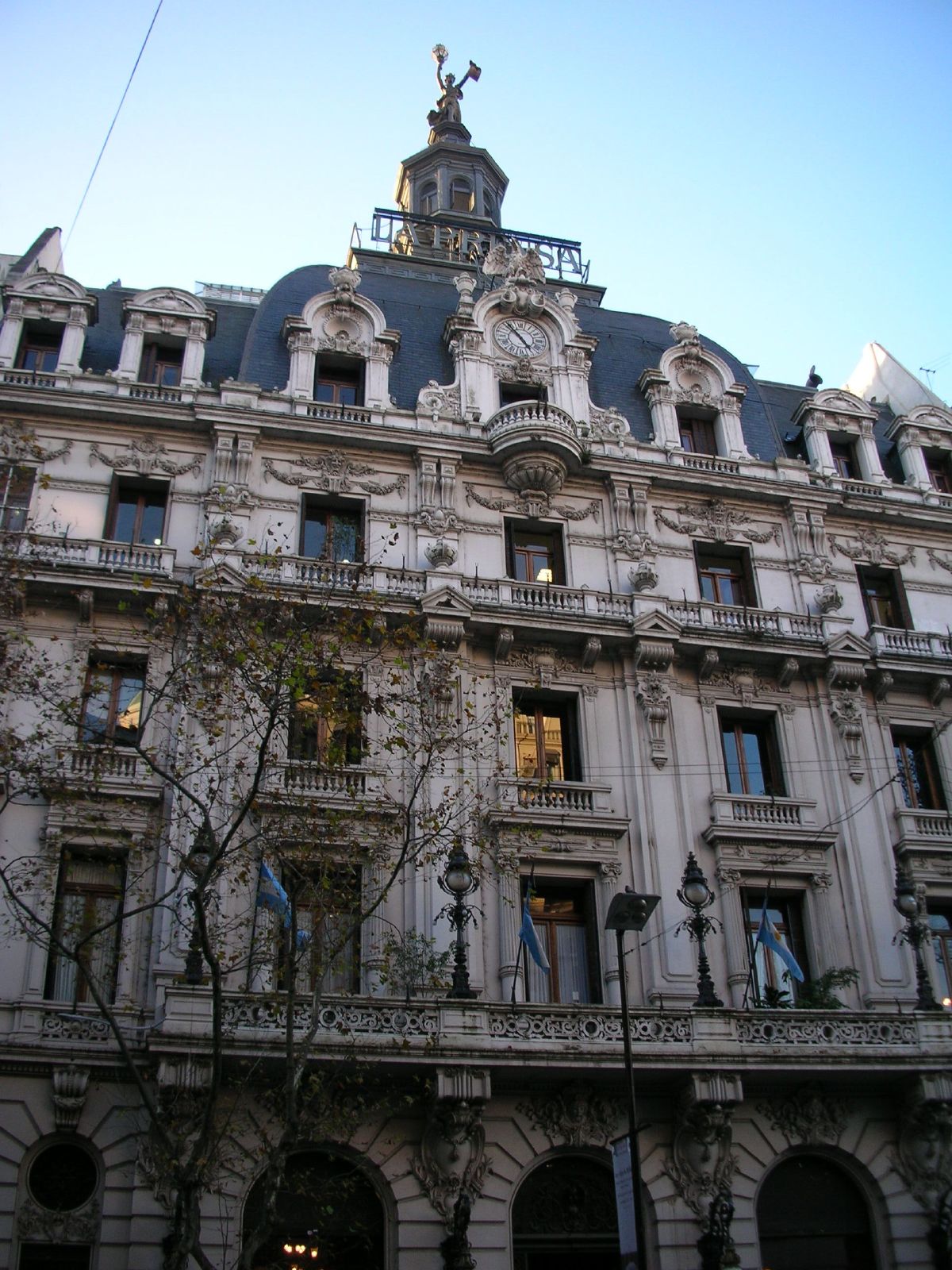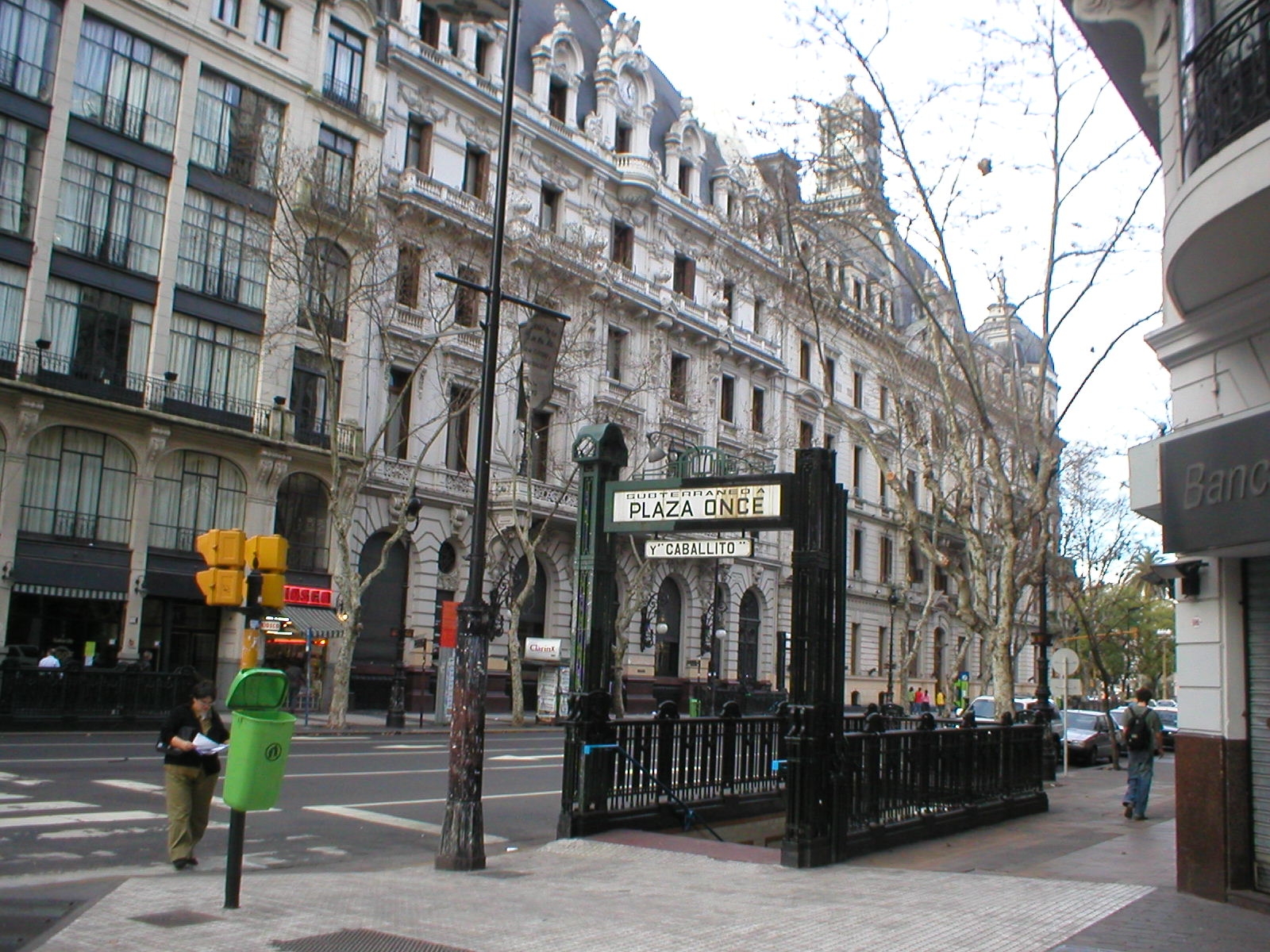Buenos Aires House of Culture on:
[Wikipedia]
[Google]
[Amazon]
 The Buenos Aires House of Culture is an architectural landmark in the Montserrat section of the Argentine capital.
The Buenos Aires House of Culture is an architectural landmark in the Montserrat section of the Argentine capital.
The spire also contains a siren, installed in 1900 to symbolically herald news ''La Prensa'' considered singular milestones. The siren has been rung five times over the decades: on news of the assassination of The building's interior was completed with mostly imported materials, including Spargne elevators from the
The building's interior was completed with mostly imported materials, including Spargne elevators from the
File:Frente Casa de la Cultura Avenida de Mayo.jpg,
File:Puerta Casa de la Cultura La Prensa Avenida de Mayo.jpg,
File:Interior Casa de la Cultura Buenos Aires La Prensa.jpg,
File:Lobby - Buenos Aires Casa de la Cultura.jpg,
File:Casa de la Cultura Buenos Aires 2.jpg,
File:Detalle Techo Interior Casa de la Cultura Buenos Aires La Prensa.jpg,
File:Detalle piso Casa de la Cultura La Prensa Buenos Aires.jpg,
Casa de la Cultura
{{DEFAULTSORT:Buenos Aires House of Culture National Historic Monuments of Argentina Buildings and structures in Buenos Aires Culture in Buenos Aires Commercial buildings completed in 1898 Tourist attractions in Buenos Aires 1898 establishments in Argentina
 The Buenos Aires House of Culture is an architectural landmark in the Montserrat section of the Argentine capital.
The Buenos Aires House of Culture is an architectural landmark in the Montserrat section of the Argentine capital.
Overview
The outmoded headquarters of what was thenArgentina
Argentina (), officially the Argentine Republic ( es, link=no, República Argentina), is a country in the southern half of South America. Argentina covers an area of , making it the second-largest country in South America after Brazil, th ...
's second-largest newspaper, ''La Prensa ''La Prensa'' ("The Press") is a frequently used name for newspapers in the Spanish-speaking world. It may refer to:
Argentina
* ''La Prensa'' (Buenos Aires)
* , a current publication of Caleta Olivia, Santa Cruz
Bolivia
* ''La Prensa'' (La Paz ...
'', led its influential proprietor in 1894, José Clemente Paz, to purchase a 1300 m² (14,000 ft²) lot on the newly opened Avenida de Mayo, and he commissioned local architects Carlos Agote and Alberto Gainza to design a new headquarters at the site. Agote and Gainza, both graduates of the ''École Centrale des Arts et Manufactures
École may refer to:
* an elementary school in the French educational stages normally followed by secondary education establishments (collège and lycée)
* École (river), a tributary of the Seine flowing in région Île-de-France
* École, Savoi ...
'', drew from their training in Paris
Paris () is the Capital city, capital and List of communes in France with over 20,000 inhabitants, most populous city of France, with an estimated population of 2,165,423 residents in 2019 in an area of more than 105 km² (41 sq mi), ma ...
to create a Beaux-Arts design, beginning with a façade inspired by French architect Charles Garnier.
Completed in 1898, the new ''La Prensa'' offices was inaugurated in a ceremony attended by around 20,000. The Beaux-Arts exterior is notable also for its spire, which is topped by a gilt bronze monument to freedom of the press represented by Pallas Athena
Athena or Athene, often given the epithet Pallas, is an ancient Greek goddess associated with wisdom, warfare, and handicraft who was later syncretized with the Roman goddess Minerva. Athena was regarded as the patron and protectress of v ...
and created by French sculptor Maurice Bouval (of Thibaut Frères). Bouval's Athena stands 50 m (164 ft) above the ground and holds an electric lamp representing Prometheus
In Greek mythology, Prometheus (; , , possibly meaning " forethought")Smith"Prometheus". is a Titan god of fire. Prometheus is best known for defying the gods by stealing fire from them and giving it to humanity in the form of technology, kn ...
' sacred fire.Casa de la Cultura: Historia y arquitectura The spire also contains a siren, installed in 1900 to symbolically herald news ''La Prensa'' considered singular milestones. The siren has been rung five times over the decades: on news of the assassination of
Umberto I
Umberto I ( it, Umberto Rainerio Carlo Emanuele Giovanni Maria Ferdinando Eugenio di Savoia; 14 March 1844 – 29 July 1900) was King of Italy from 9 January 1878 until his assassination on 29 July 1900.
Umberto's reign saw Italy attempt colo ...
, the King of Italy
Italy ( it, Italia ), officially the Italian Republic, ) or the Republic of Italy, is a country in Southern Europe. It is located in the middle of the Mediterranean Sea, and its territory largely coincides with the homonymous geographical ...
, in 1900; on the landing of the Apollo 11
Apollo 11 (July 16–24, 1969) was the American spaceflight that first landed humans on the Moon. Commander Neil Armstrong and lunar module pilot Buzz Aldrin landed the Apollo Lunar Module ''Eagle'' on July 20, 1969, at 20:17 UTC, ...
spacecraft on the moon; on the Argentine National Football Team's first FIFA World Cup
The FIFA World Cup, often simply called the World Cup, is an international association football competition contested by the senior men's national teams of the members of the ' ( FIFA), the sport's global governing body. The tournament ha ...
, in 1978; on the invasion of the Falkland Islands
The Falkland Islands (; es, Islas Malvinas, link=no ) is an archipelago in the South Atlantic Ocean on the Patagonian Shelf. The principal islands are about east of South America's southern Patagonian coast and about from Cape Dubouze ...
by the last dictatorship, in 1982; and on the return of democracy with the inaugural of President Raúl Alfonsín
Raúl Ricardo Alfonsín (12 March 1927 – 31 March 2009) was an Argentine lawyer and statesman who served as President of Argentina from 10 December 1983 to 8 July 1989. He was the first democratically elected president after more than ...
, in 1983.
 The building's interior was completed with mostly imported materials, including Spargne elevators from the
The building's interior was completed with mostly imported materials, including Spargne elevators from the United States
The United States of America (U.S.A. or USA), commonly known as the United States (U.S. or US) or America, is a country primarily located in North America. It consists of 50 states, a federal district, five major unincorporated territori ...
, as well as French fixtures such as Boulanger mosaic tiles, clocks by Paul Garnier
Paul may refer to:
*Paul (given name), a given name (includes a list of people with that name)
*Paul (surname), a list of people
People
Christianity
* Paul the Apostle (AD c.5–c.64/65), also known as Saul of Tarsus or Saint Paul, early Chri ...
and wrought-iron work from Val d'Osne. The first floor is centered on the Golden Salon, where Paz opened the Popular Conference Institute, celebrated during the twentieth century for its weekly literary readings and lectures (notably those of Jorge Luis Borges
Jorge Francisco Isidoro Luis Borges Acevedo (; ; 24 August 1899 – 14 June 1986) was an Argentine short-story writer, essayist, poet and translator, as well as a key figure in Spanish-language and international literature. His best-known b ...
). The salon was decorated with frescoes by Reinaldo Giudici and Nazareno Orlandi, both Italian-born painters. Paz also opened an extensive library in the building, which grew to over 80,000 volumes and at one time maintained several local branches, as well as one in Paris.
The conservative ''La Prensa'' was expropriated by the administration of Juan Perón in 1951, by which the building became property of the General Confederation of Labour (Argentina), CGT labor union. The bronze Minerva was removed by the CGT in 1952, allegedly on fears that it could collapse (that this was a removal of a monument representing freedom of the press has not been lost on historians). The statue was reinstalled in 1956, and while press freedom restrictions otherwise worsened following Perón's overthrow, ''La Prensa'' was restored to the Paz family. The newsdaily's decline in readership helped lead to the company sale of the landmark building in 1988, however, and it became the Ministry of Culture of Buenos Aires.
Known since then as the ''Casa de la Cultura'' (House of Culture), the building was declared a List of National Historic Monuments of Argentina, National Historic Monument in 1995. A passageway built to connect it to the adjacent Buenos Aires City Hall was converted into the Ana Díaz Salon, where art exhibits are hosted.
Gallery
Notes
External links
Casa de la Cultura
{{DEFAULTSORT:Buenos Aires House of Culture National Historic Monuments of Argentina Buildings and structures in Buenos Aires Culture in Buenos Aires Commercial buildings completed in 1898 Tourist attractions in Buenos Aires 1898 establishments in Argentina